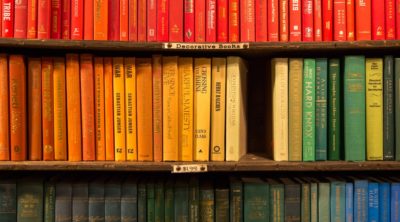
What is figurative language and what are the different types of figures of speech? Here, we shall take a closer look at the concept.
In any form of literature or even in mediums like movies and plays, there are situations that demand the use of words or expressions that do not plainly state facts. The writer has at his disposal different figures of speech that implies a certain meaning rather than stating them as facts. This is known as using figurative language wherein it is common to use exaggerations or symbolism to make a point. In poetry and prose alike, the use of different types of figures of speech is very common and these are commonly used literary devices. Often the suggested meanings can have visual and aural effects. Figurative language is interesting as it forces the reader to look for a meaning that is different from the obvious.
In the section below, we have listed out some of the main types of figures of speech, their definitions, and examples of the same. Although there are many more types of figures of speech that are used by authors to help readers envision beauty in the works that they create.
FIGURES OF SPEECH
Allegory
Alliteration
Apostrophe
Assonance
Hyperbole
Idiom
Metaphor
Metonymy
Onomatopoeia
Personification
Simile
Symbolism
Synecdoche
Understatement
ALLEGORY
Definition: A literary device that makes use of objects, characters, and actions to symbolize an underlying meaning which is dissimilar from what the object or character actually translates into.
Example: Call me but love and I’ll be new baptized. – Romeo and Juliet, William Shakespeare
ALLITERATION
Definition: Alliteration is defined as the repetition of the consonant sound in a verse or a sentence.
Example: Behemoth biggest born of earth up-heaved
His vastness: Fleeced the flocks and bleating rose,
As plants: Ambiguous between sea and land
The river-horse, and scaly crocodile. -Paradise Lost, John Milton
APOSTROPHE
Definition: The figure of speech in which the writer addresses a person or a thing, a quality that is abstract, or a lifeless object.
Example: Welcome, O life! I go to encounter for the millionth time the reality of experience and to forge in the smithy of my soul the uncreated conscience of my race.” – A Portrait of the Artist as a Young Man, James Joyce
ASSONANCE
Definition: This figure of speech is very similar to alliteration, the difference being that the similarity exists in the vowel sounds in succeeding words.
Example: Hear the mellow wedding bells,
Golden bells!
What a world of happiness their harmony foretells!
Through the balmy air of night
How they ring out their delight!
From the molten-golden notes,
And an in tune,
What a liquid ditty floats
To the turtle-dove that listens, while she gloats… – Bells, Edgar Allen Poe
HYPERBOLE
Definition: In plain simple terms, the writer or poet uses exaggeration to emphasize on something for heightened effect.
Example: I have seen this river so wide it had only one bank. – Life on the Mississippi, Mark Twain
IDIOM
Definition: When you normally talk about figurative language, idiom does not generally figure. It is a commonly used expression that has a meaning that has been established by common usage.
Example: I am just waiting for him to kick the bucket
METAPHOR
Definition: A metaphor is probably one of the most common figures of speech in poetry and literature. The writer or the poet compares two very unlike things to display an important quality that they have in common.
Example: A man may break a word with you, sir, and words are but wind. – The Comedy of Errors, William Shakespeare
METONYMY
Definition: In this figure of speech the word or phrase that is supposed to be used is substituted by another word or phrase that it is closely associated with. It is also a way of referring to something by making a reference to things around.
Example: Her voice is full of money. – The Great Gatsby, F. Scott Fitzgerald
ONOMATOPOEIA
Definition: The technique in which words that imitate sounds are used to refer to the objects, living things, or actions that they are associated with.
Example: Jemimah: It’s called Chitty Chitty Bang Bang.
Truly Scrumptious: That’s a curious name for a motorcar.
Jemimah: But that’s the sound it makes. Listen.
It’s saying chitty chitty, chitty chitty, chitty chitty, chitty chitty, chitty chitty, bang bang! chitty chitty… – Chitty Chitty Bang Bang
PERSONIFICATION
Definition: This is a figure of speech which is used when the poet or the writer wants to attribute human qualities to an inanimate object or thought.
Example: Only the champion daisy trees were serene. After all, they were part of a rain forest already two thousand years old and scheduled for eternity, so they ignored the men and continued to rock the diamondbacks that slept in their arms. It took the river to persuade them that indeed the world was altered. – Tar Baby, Toni Morrison
SIMILE
Definition: One of the most commonly used types, there is an obvious comparison that is made between two dissimilar things using words such as, like and as.
Example: Shrek: Ogres are like onions.
Donkey: They stink?
Shrek: Yes. No!
Donkey: They make you cry?
Shrek: No!
Donkey: You leave them out in the sun, they get all brown, start sprouting little white hairs.
Shrek: No! Layers! Onions have layers! – Shrek
SYMBOLISM
Definition: This is a figure of speech that is used when a noun with an inherent meaning is used as a symbol for another object that has a completely different meaning.
Example: Ah Sunflower, weary of time,
Who countest the steps of the sun;
Seeking after that sweet golden clime
Where the traveler’s journey is done;
Where the Youth pined away with desire,
And the pale virgin shrouded in snow,
Arise from their graves, and aspire
Where my Sunflower wishes to go! – William Blake
SYNECDOCHE
Definition: This is one of the figures of speech that uses a part to denote the whole, and vice versa.
Example: Take thy face hence. – Macbeth, William Shakespeare
UNDERSTATEMENT
Definition: This is a type of figurative language in which the writer or poet makes the situation seem like it has lesser importance than it does in actuality.
Example: The grave’s a fine and private place,
But none, I think, do there embrace. – To his Coy Mistress, Andrew Marvell
This list of figures of speech in the English language should have been helpful in understanding the concept of using figures of speech instead of plain language. If you are an aspiring writer, then understanding these concepts is very important so that you are able to write a piece that is rich not only in its content but also the kind of language used.


